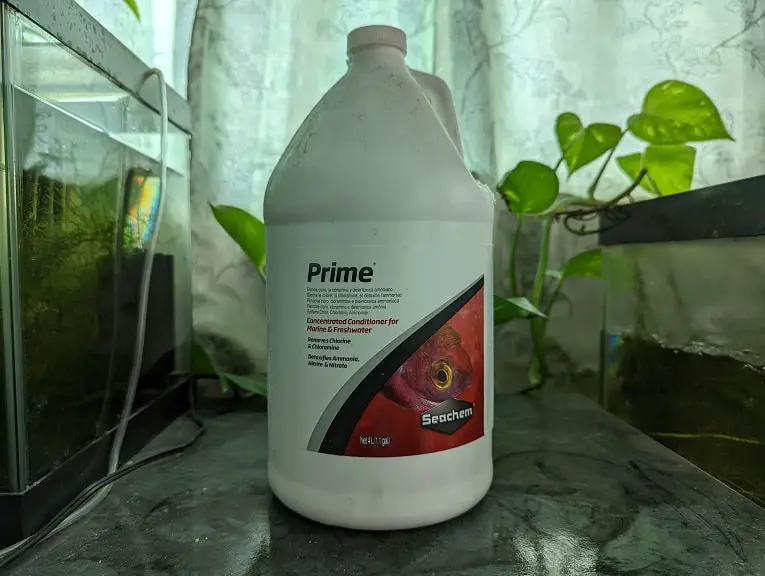Seachem ParaGuard is used to treat various parasitic infections in your fish tank. You can take a look at this guide at Aquarium Blueprints to see how this product will negatively affect the beneficial bacteria in the aquarium.
Quick Summary
While Seachem ParaGuard won’t directly harm the beneficial bacteria that are already established in your tank, the product will slow down the growth of new colonies from growing.
Therefore, the biological filtration in your tank may become vulnerable if there is a sudden die-off of these bacteria. Sudden spikes to the ammonia, nitrite and nitrate levels in the aquarium may cause issues as well.
If you noticed elevated concentrations of ammonia, nitrite and nitrate, then we recommend using Seachem Prime to detoxify these toxic nitrogen compounds for up to 48 hours at a time.
You can also use Seachem Stability to help the beneficial bacteria quickly grow back and help repair the disrupted biological filtration.
How does Seachem ParaGuard affect biological filtration?
For the uninformed, Seachem ParaGuard uses aldehydes, malachite green and polymers to treat Fin Rot, Flukes, Ich and Velvet.
This medical solution should not directly harm the existing beneficial bacteria in your fish tank. However, it will slow down the establishment of newer bacteria colonies. So, if there is an event that cause a disruption to your biological filtration, then it will take longer than normal for the beneficial bacteria to bounce back.
As long as your tank has been fully cycled, however, then you most likely won’t have anything to worry about.
How to tell if Seachem ParaGuard is affecting your beneficial bacteria
If you want to know whether or not Seachem ParaGuard may be affecting the beneficial bacteria colonies in your fish tank, then you need to use a test kit to check the water parameters of your aquarium.
For healthy tank water, you should have 0 ppm of ammonia and 0 ppm of nitrites. The water should also have less than 40 ppm of nitrates. If you have more sensitive aquatic pets, then we recommend keeping nitrate levels to below 20 ppm.
If the test kit shows that you have higher than the aforementioned safe levels of ammonia, nitrites and/or nitrates when using Seachem ParaGuard, then something may have happened that lead to the disruption of your biological filtration.
What to do when your biological filtration gets disrupted when using Seachem ParaGuard
If you test kit is showing spikes in ammonia, nitrites and/or nitrates, then we recommend using Seachem Prime as it will instantly detoxify any excess levels of these nitrogen compounds.

Before adding Prime, make sure that at least 30 minutes have passed since you last added ParaGuard. Otherwise, the oxygen levels in your tank will get depleted.
To be extra safe, you may also want to increase the water flow of your filter and/or air flow of your air stone to better oxygenate the tank water if you decide to use ParaGuard and Prime at the same time.
Even if Seachem Prime detoxify ammonia, nitrites and nitrates in your fish tank, this effect will only last at a maximum of 48 hours. Therefore, we recommend that you add Prime to the aquarium every two days until you get to the safe concentration levels of these nitrogen compound.
To find out more about how you can use ParaGuard and Prime together, you can check out these directions.
As we stated above, Seachem ParaGuard will slow down the growth of the beneficial bacteria colonies that will help consume ammonia, nitrites and nitrates. To counter this slowdown, we recommend you use a live bacteria product, such as Seachem Stability, to accelerate the process of building back up your biological filtration.
